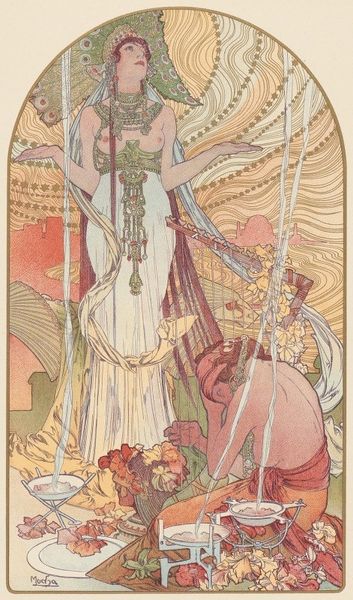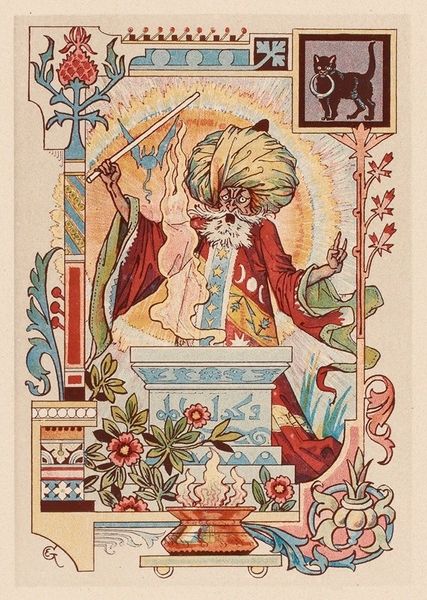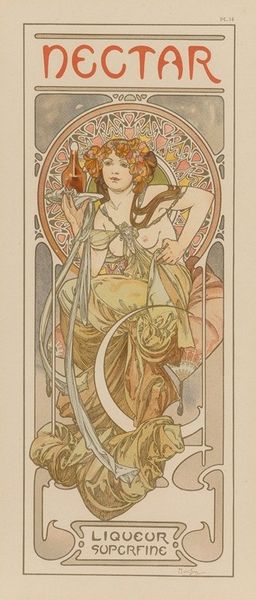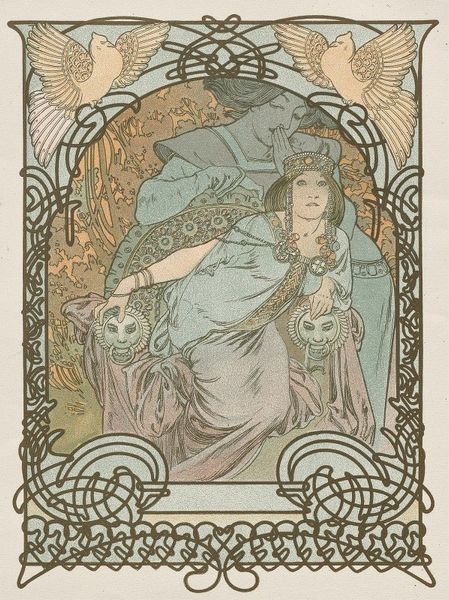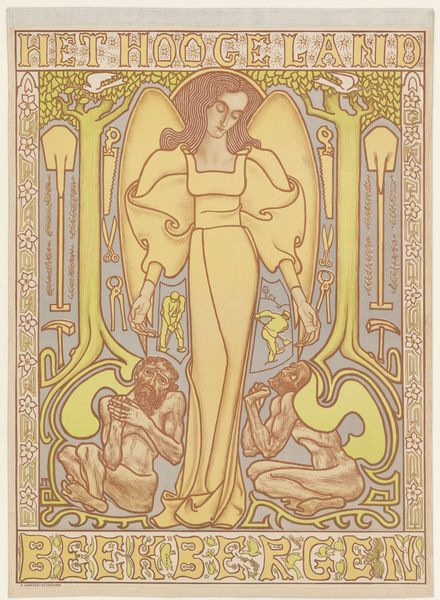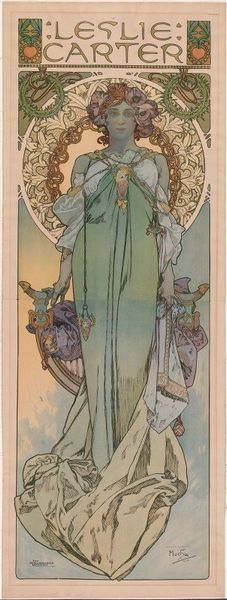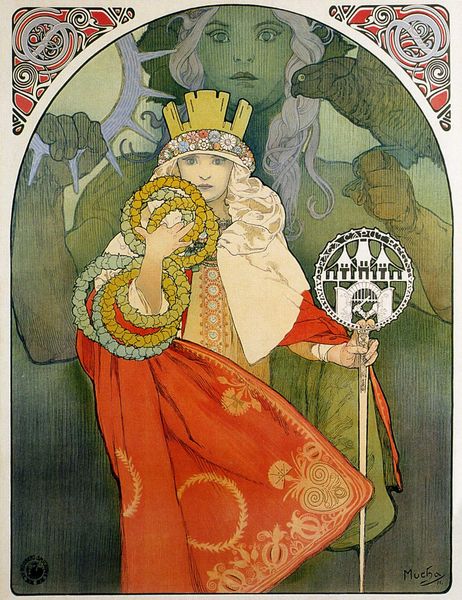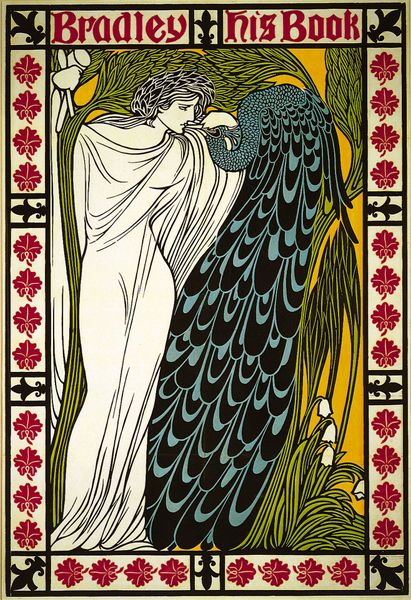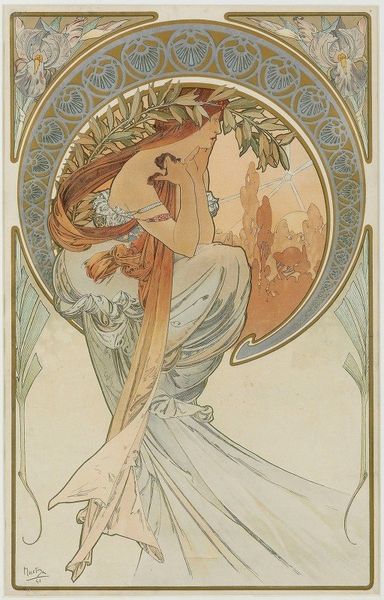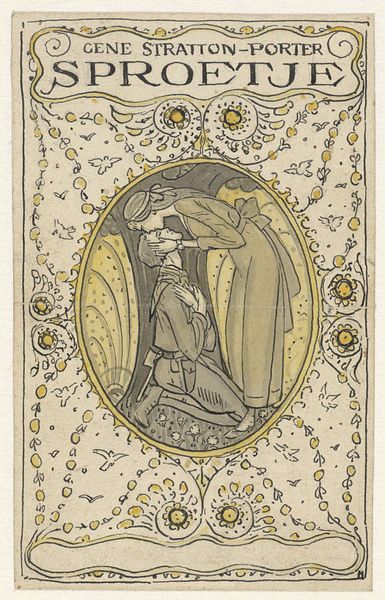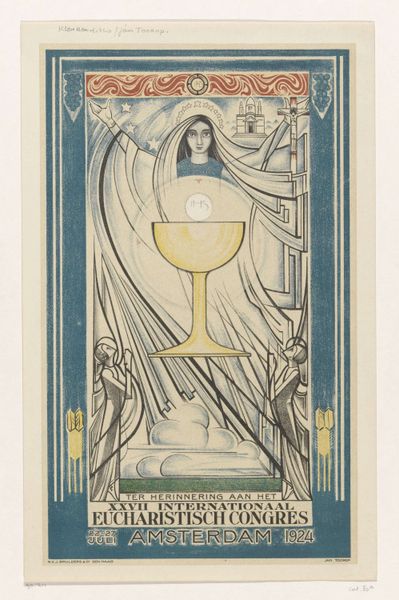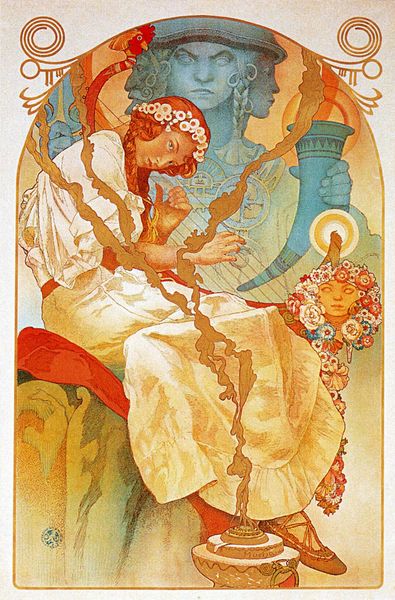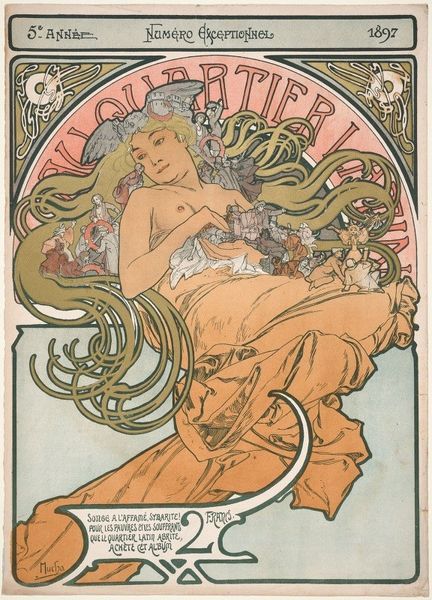
#
art-nouveau
# print
#
asian-art
#
figuration
#
pattern background
#
flower pattern
#
intricate pattern
#
line
#
symbolism
#
decorative-art
#
pattern in nature
Copyright: Public domain
Curator: Here we have an “Untitled” print by Otto Eckmann, created in 1899. The swirling composition draws you in immediately, doesn't it? Editor: It certainly does. There's a sense of dynamic movement juxtaposed with rigid symmetry that initially strikes me. It is simultaneously active and serene. Curator: Yes, and observe how Eckmann synthesizes Japanese aesthetics, seen in the flowing lines, with European Art Nouveau’s decorative sensibilities. The combination results in an immersive symbolic structure. Do you pick up on any immediate symbols? Editor: I immediately recognize the East Asian artistic themes. Specifically, the group is bordered on the bottom by two dragons—figures frequently used to reflect dynastic authority, wealth, or luck in broader Asian contexts. Further, the repeated depiction of what seem to be courtly figures suggests an imperial order. Curator: Excellent. The imagery includes what looks like a divine figure, or a high-ranking Buddha, meditating as five dancing women in an elaborate style perform around him. Editor: And the flowing fabric they manipulate certainly enhances that sensation. Yet, I question this depiction within its historical framework. Curator: How so? Editor: Consider that Eckmann created this during a period of intense colonial expansion. European artists often exoticized Eastern cultures. The symbolical choices here are likely orientalist projections that romanticize while simultaneously failing to address the sociopolitical realities of those cultures. Curator: That’s a critical point. One could argue that while appropriating these Asian artistic influences, Eckmann's work subtly perpetuates an "us" versus "them" narrative. This speaks volumes about the cultural memory preserved and reshaped through these visual motifs. Editor: Indeed. Examining artworks like this pushes us to see art history through the lens of power and representation, acknowledging how these aesthetics get filtered through the artist’s socio-cultural position. The use of those patterns seems very different when acknowledging its legacy. Curator: By understanding the convergence of Asian art traditions with European decorative movements in the late 19th century, and reflecting on our shared human condition, we might find that artworks such as this offer us a richer view. Editor: I couldn't agree more. It urges us to maintain a conscious and critical outlook on visual languages inherited from fraught colonial narratives.
Comments
No comments
Be the first to comment and join the conversation on the ultimate creative platform.
